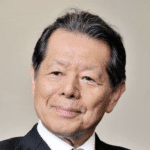Fukushima in review: A complex disaster, a disastrous response
By Yoichi Funabashi, Kay Kitazawa | March 1, 2012
On March 11, 2011, an earthquake and tsunami crippled the Fukushima Daiichi Nuclear Power Station. The emerging crisis at the plant was complex, and, to make matters worse, it was exacerbated by communication gaps between the government and the nuclear industry. An independent investigation panel, established by the Rebuild Japan Initiative Foundation, reviewed how the government, the Tokyo Electric Power Company (Tepco), and other relevant actors responded. In this article, the panel’s program director writes about their findings and how these players were thoroughly unprepared on almost every level for the cascading nuclear disaster. This lack of preparation was caused, in part, by a public myth of “absolute safety” that nuclear power proponents had nurtured over decades and was aggravated by dysfunction within and between government agencies and Tepco, particularly in regard to political leadership and crisis management. The investigation also found that the tsunami that began the nuclear disaster could and should have been anticipated and that ambiguity about the roles of public and private institutions in such a crisis was a factor in the poor response at Fukushima.
Together, we make the world safer.
The Bulletin elevates expert voices above the noise. But as an independent nonprofit organization, our operations depend on the support of readers like you. Help us continue to deliver quality journalism that holds leaders accountable. Your support of our work at any level is important. In return, we promise our coverage will be understandable, influential, vigilant, solution-oriented, and fair-minded. Together we can make a difference.
Issue: Bulletin of the Atomic Scientists Volume 68 Issue 2
Keywords: Fukushima, Rebuild Japan Initiative Foundation, Tepco, communication, disaster, earthquake, nuclear energy, safety, tsunami
Topics: Uncategorized















